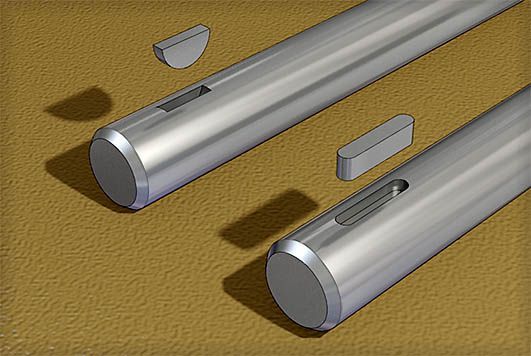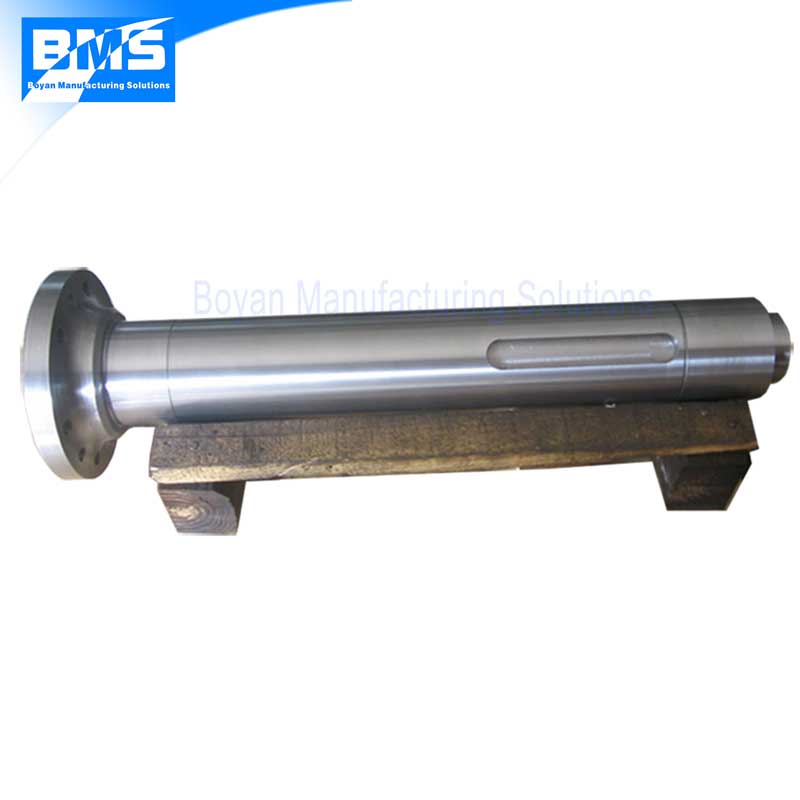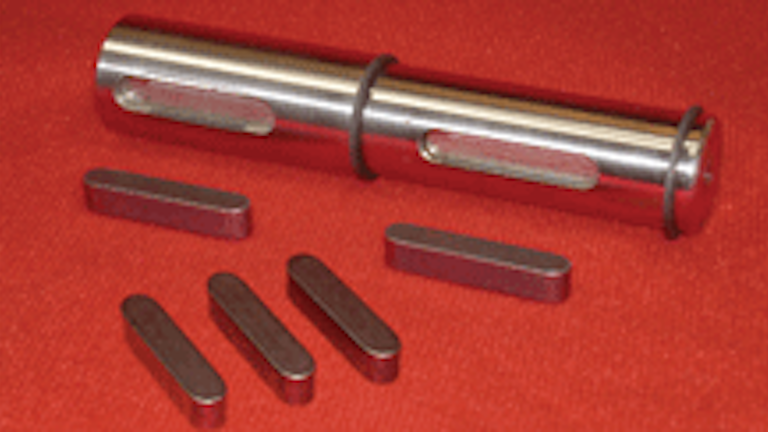Key Slot Shaft
Find all the bearings, bearing housings, v-belts, oil seals, collars you need and more including the 3/4' Shaft Coupler with Keyway at theBigBearingStore.com.
- Metric Key Keyway Dimensions. Engineering Hardware Design Data ISO Hardware Specifications Table. Metric Key Keyway Dimensions Per ISO/R773 - Js9 Width Tolerance.
- Keyway is a slot established on shaft, which resists sleeping of hub fitted on shaft, there are different types of keyway like round key, square key and it is subjected to stress and strain, it is designed based on its application.
- The assorted keys in these sets have an insulated handle and shaft that protect against shock from accidental contact with live electrical circuits. These tools are tested to 1, 000 volts to meet IEC 60900 and ASTM F1505-01. They have a long shaft that reaches into tight spots to turn fasteners.
- 25mm Inside x 45mm Outside Diam, Metric Two Piece Clamping Rigid Coupling with Keyway 75mm Long x 8mm Keyway Width x 3.3mm Keyway Depth. MSC# 75256586 Climax Metal Products (2MISCC-25-25-KW).
Machine Keystock Express’ goal is to offer lower prices on machine key stock and ready-to-use machine key sizes than other sellers.
All listed items are in stock and we ship our machine keys from the USA quickly! We ship only to the USA and Canada.
This website’s online store sells small quantities to retail customers of ready-to-ship machine keys that are in stock. For large quantity wholesale machine key orders or special order machine keys you need us to manufacture quickly, please visit our wholesale website.
Machine Keystock Express manufactures machine keys of the highest quality that meet ISO 9001 certifications. Our machine keys are manufactured with SS304 stainless steel and SC45 carbon steel and alloy steel in many sizes.
If you normally buy machine key stock to make your own machine keys, you may find it cheaper to buy our ready-made keys in the sizes you need, which can be less costly than your labor needed to work with key stock.

We manufacture several kinds of machine keys in many sizes:
- Woodruff keys are half-circle shapes, with radius or flat bottoms. DIN-6888.
- Parallel keys are rectangular shapes with ends that are square (DIN-6885-B), round (DIN-6885-A), or both (DIN-6885-AB). We have in stock ready-to-use keys in inch and metric sizes
- Key stock is very long so you can cut it into whatever size machine keys you need. We have ready-to-ship key stock in inch and metric sizes.
Need Wholesale Quantities?
We have the lowest prices and can manufacture
any kind of precision machine keys or parts you need.
Visit our wholesale site and we’ll provide a price quote
What Are Machine Keys,
Also Known as Shaft Keys?
Machine keys are used in power transmission to transmit torque between a shaft and a shaft mounted component such as a gear, pulley, or coupling. Both the shaft and the component must be machined with a keyway of the appropriate size and style for the key to be used.
Machine keys are sometimes called shaft keys, or sunk keys, and are available in a variety of types and include Parallel Keys, Flat Keys, Woodruff Keys, Square Keys, Rectangular Keys, Plain Taper Keys, Gib-Head Taper Keys, Perpendicular Pins and the Feather Key.
Machine Keys have a wide range of applications in our daily lives. Machine Keys hold machinery parts in place or align components. Machine Keys are used in power transmissions, motors, speed reducers, variators, automobiles, motorcycles, and industrial machines.
Each machine key has few attributes such as width, height, length, finish, and tolerance. It is important to understand the tolerance attribute. There are two type of tolerance. An oversize tolerance machine key provides a slightly tighter fit and an undersize tolerance machine key provides a slightly looser fit. Tolerance is specified in standards such as DIN6885 and JIS B 1301. Machine keys with metric (mm) measurement are almost always made as close tolerance undersized, whereas machine keys with imperial measurement (inch) tend to be made in both oversize and undersize tolerance sizes.
Sometimes the term machine key and keystock are used interchangeably. However, the term keystock refers to a “stock” of material that is 300mm, 1 foot or longer in length, and from which machine keys are made. Machine key refers to a finished product that is installation ready. Keystock is often used in post market repairs or small production. Keystock and machine keys are made from material such as carbon steel, stainless steel or alloy steel.
Parallel Machine Keys
Parallel keys are the most widely used. They have a square or rectangular cross-section. Parallel keys include Square Keys, Rectangular Keys. The shaft is usually key slotted for the full length for the shaft or slotted from the end of the shaft and along the length of the shaft for a distance greater than the length of the key to be used. Parallel keys can be installed by lining up the keyslots in the shaft and the component and then pressing the parallel key between the slots. There are three shapes of parallel keys depending on the ends of the keys. The end of a key can be either square or radius or round. The type of ends are referred to as “Forms”. Form A refers to a round end and Form B refers to a square end. For a Form A key, both ends are round, sometimes called the double round key. Form B key has both ends square. Form AB is a key with one end round and one end square, sometimes called the single round key.
Woodruff Keys
A woodruff key is a half moon shaped key that is inserted into a curved slot in the shaft. Woodruff keys are machined metal fasteners used to transfer torque from a shaft to gears where tight tolerances and functionality are vital. They are precisely a fail-safe device to ensure that the key breaks before the gears do, cutting replacement costs down significantly. Woodruff keys are used in a variety of applications including, lawn and garden equipment, automobiles, trucks, pumps, electric motors, agricultural equipment and other heavy equipment. They are used more often than machine keys in automated assemblies, such as automotive, because they are easier to feed and maintain tight tolerances. No matter the application, the woodruff key’s job is the same, to transfer the torque by locking the gears into the crank shaft.
Machine Key Standards
There are two sets of standards in the world – one for the imperial (inch) and another for metric (mm). DIN 6885 and JIS B 1301 deals with metric keys and ANSI B17.1 and BS 46 deals with imperial machine keys. These standards define the material, dimensions, tolerance and finish of the keys. There is a great similarity between DIN 6885 and JIS B 1301-1996. DIN 6885 is more popular in Europe and JIS in Asia.
- ANSI B17.1 By American National Standard Institute
- DIN6885 from German
- JIS B 1301-1996 from Japan
- BS 46 from England
- GB 1567-2003 from China
Key Slot Shaft Bar
Let Machine Keystock ship your machine keystock to you fast as the lowest price!
Need Small Quantities Fast?
This is our retail website for small quantities of the most popular machine keys shipped within 48 hours.
Get a Wholesale Quote
Why Power Transmission Shafts Have Both Keys and Keyways
Short answer: Keys and keyways prevent the shaft from rotating on the bore and can assist in torque transmission between the two connected shafts.
Sometimes understanding the small details, help us understand the big picture. On this blog we will dive into some basic concepts of power transmission.

Have you tried to start an engine, or put a drive train into gear, and nothing happened?
You may have even heard the starter motor engage and start, but then there was no forward motion when the transmission finally became engaged. Most of the time, when this occurs, there are a few things that you can check, such as the transmission fluid, transmission shift cable, or the transmission shaft key. But, let me explain this a bit further.
Breaking down the components
Power transmission
As the term easily implies, power transmission is the transfer of energy from a place of generation to a place where it is applied to perform useful work. In Figure 1 below, you can see how a steam turbine transfers the power generated by steam into a generator, which in turn creates electricity. Note the shaft connecting the steam turbine with the generator. Power generation is one of the many industries covered by Lovejoy products.
(Figure 1)
Key Slot Shaft Bearings
Shaft
A shaft is an element used to transmit both the power and torque. Shafts are made in a variety of different shapes and forms, but most tend to have circular cross sections that are either solid or tubular shaped. Shafts transmit power directly from a driving device or power source into a load (figure 1). Shafts can carry gears, pulleys, and sprockets in order to transmit rotary motion and power via mating gears, belts, and chains. Alternatively, a shaft may simply connect to another shaft via a coupling mechanism. Couplings are connected to a shaft by means of a key, keyway, or keyseat.
Key, Keyway, and Keyseat

A key is a piece of metal used to connect a rotating machine element to the shaft. A key prevents a relative rotation between the two parts, and may enable torque transmission to occur. For a key to function properly, both the shaft and rotating elements (gear, pulley and coupling) must have a keyway and a keyseat. Usually the term keyseat is referred as a groove or pocket on a shaft, and a keyway is a slot in a hub in which the key fits into. The complete system is called a keyed joint (Figure 2).
(Figure 2)
Keys are made of varied types of materials, and also come in different shapes and sizes. The most common key shapes are rectangular or tapered, and are typically made of steel.
Shaft Key Slot Tolerances
Mechanics
In order to lock a hub or bushing and shaft together, and also to prevent a shaft from rotating in the bore (Figure 2), a key is commonly inserted into a keyway that is machined in both the bore and the shaft. The key is responsible for preventing any rotation between the shaft and the bore, and also carries a portion of the torque load to the keys. Torque transmission by keys is the most common and widely used power transmitting method. Unfortunately, misaligned keys and keyways can result in mechanical failures. Therefore, in order to ensure an appropriate fit, the width and height dimensions of a standard key and keyway must adhere to recommended tolerances. Industry standards for key sizes in various bores exist for both the English and Metric systems.
In addition, when there is a distance that exists between the driving and driven components, drive shafts frequently connect with one another using one or more universal joints, jaw couplings, or in some cases, a splinted joint or prismatic joint.
So, to conclude, the two most important functions of keys and keyways on a power transmission shaft are to:
- Prevent the shaft from rotating in the bore
- Enable power transmission through the torque